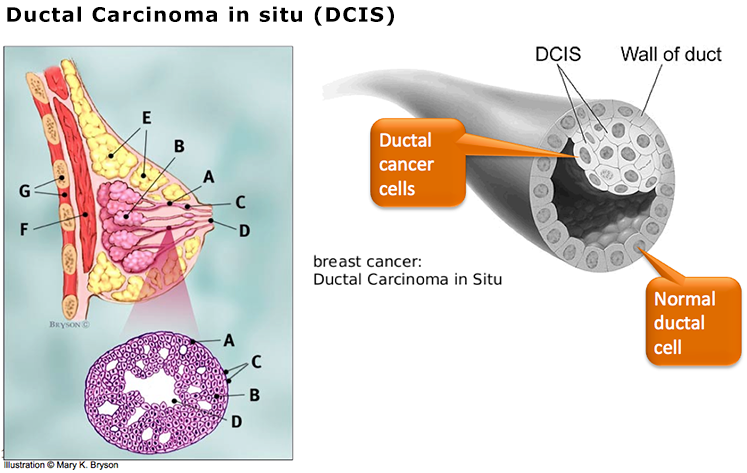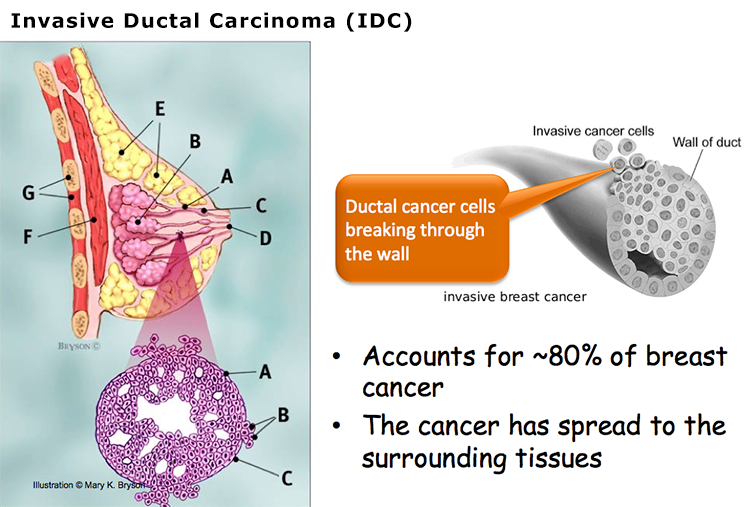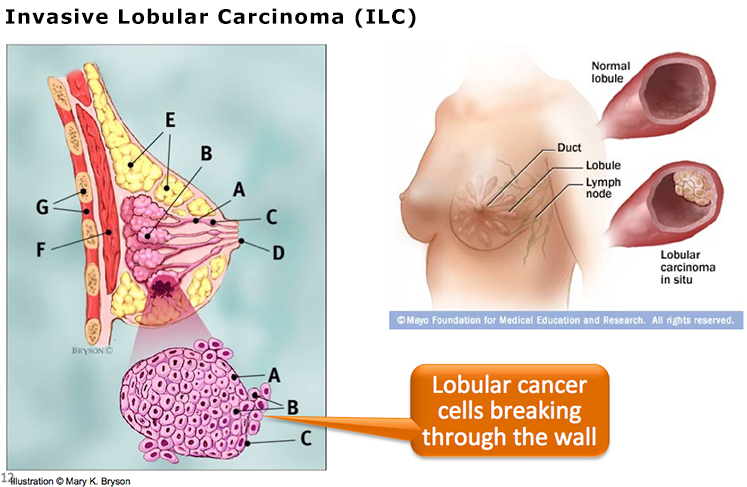Breast Cancer 101
What is breast cancer?
- Breast cancer is the most common cancer in American women > 200,000 females diagnosed with breast cancer per year
- It is the second most common cause of cancer death in women
- It’s the number one cause of death in females age 45-55
- Abnormal cells develop from normal cells in the breast to form tumors
- Tumor cells have genetic defects that allow the cells to grow too rapidly and to invade normal tissues
- 90% of women with breast cancer have tumors due to spontaneous new mutations arising in their breast tissue as they age
- Direct extension
- Lymphatic spread
- Hematogenous spread
Most breast cancer patients undergo surgery to remove cancer from the breast. The majority of women are candidates for breast conserving surgery, commonly referred to as lumpectomy, which involves removing the portion of breast containing the tumor along with an adequate amount of normal breast tissue.
A quadrantectomy is a type of breast-conserving surgery more commonly performed in Europe than in the U.S. This surgery involves removal of a fourth of the breast tissue in an effort to reduce the need for re-excision and potentially the risk of recurrence. The downside of this method is that a patient is often left with a large defect without a significant benefit over lumpectomy.
While most patients are candidates for breast conserving therapy, and the majority of women elect this method, some patients are appropriate candidates for mastectomy, or the removal of the entire breast. Some additional tissue, such as lymph nodes from the underarm, may need to be removed as well.




A patient should consider a mastectomy in the following cases:
- Cancer that extends to another quadrant of her breast
- Malignant cells present in multiple quadrants of her breast
- Very large tumors
- A tumor that does either does not shrink while on pre-operative chemotherapy
- A history of radiation treatment
- The inability to undergo radiation treatment (for example, because of pregnancy)
- Not all mastectomies are created equal: there are many different kinds of mastectomies available to patients. And often times, it is both safe and preferable to perform breast reconstruction in the same setting, i.e. immediately following the mastectomy operation, while a patient is still under anesthesia. Reconstructive options can either be implant-based or take advantage of a patient’s own tissue (See http://www.diepflap.com)
Simple (total) Mastectomy:
This operation involves the removal of all breast tissue. Often, the lymph nodes from under the arm will be sampled (sentinel node biopsy) but not removed. This operation can be undertaken via a skin-sparing approach (see below) or in a more traditional fashion, removing the skin overlying the breast.
Modified Radical Mastectomy:
The modified radical mastectomy removes all tissue of the breast, including the fascia, or casing, of the pectoralis muscle, as well as removal of some (not all) of the axillary (underarm) lymph nodes. The pectoralis muscles are not removed in this operation.
Radical Mastectomy:
This procedure, first introduced over a century ago, involves radical removal of underarm lymph nodes, removal of the pectoralis muscles, in addition to the breast gland. Because of increased understanding and research on the nature of tumors, radical mastrctomy is rarely undertaken today. It is reserved for patients with locally advanced tumor invading the chest wall.
